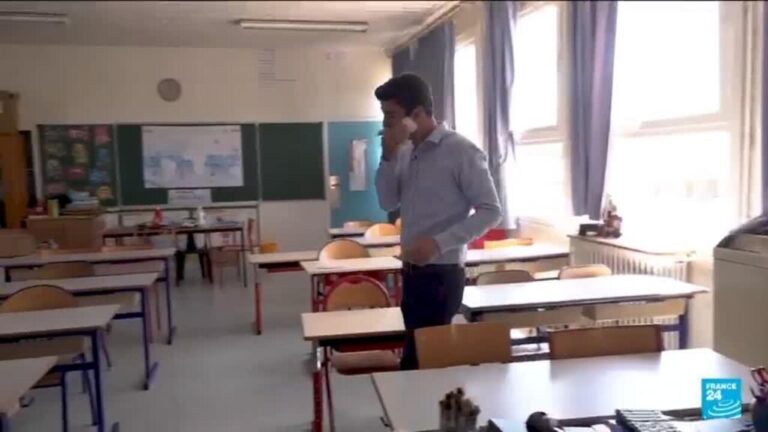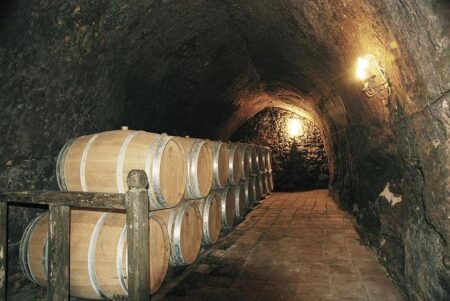A record-breaking heatwave sweeping across France has led to the temporary closure of several schools, while others scramble to implement emergency measures to protect students and staff. As temperatures soar to unprecedented levels, educational institutions are grappling with the challenge of maintaining safe learning environments amid intense heat, prompting concerns about the impact of climate change on public infrastructure. This developing situation highlights the urgent need for adaptive strategies as extreme weather events become increasingly frequent.
Heatwave Leads to Temporary Closure of Schools Across France
Across various regions of France, soaring temperatures exceeding 40¬įC have created unprecedented challenges for educational institutions. Several schools have opted for temporary closures to safeguard students and staff from heat-related health risks. In areas where schools remain open, administrators grapple with limited cooling infrastructure, often resorting to modified schedules and outdoor activities during cooler hours to mitigate the impact of the heatwave. Public health authorities have issued guidelines advising increased hydration, frequent breaks, and the suspension of strenuous physical activities during peak heat periods.
Local authorities and school officials are coordinating efforts to monitor weather conditions continuously and adjust responses accordingly. The table below summarizes the current status of schools in select affected departments:
| Department | Closure Status | Protective Measures |
|---|---|---|
| Occitanie | Partial Closure | Reduced hours, shaded outdoor activities |
| Provence-Alpes-C√īte d‚ÄôAzur | Open with Precautions | Hydration stations, air-conditioned rooms |
| Nouvelle-Aquitaine | Closed | N/A |
| Auvergne-Rh√īne-Alpes | Open with Modifications | Flexible scheduling, outdoor shade |
Challenges Faced by Remaining Schools in Managing Extreme Heat
As temperatures soar during the unprecedented heatwave, the majority of schools that remain open grapple with a host of logistical and safety challenges. Many institutions lack adequate air conditioning, forcing them to rely on temporary cooling methods such as fans and makeshift shading which only provide limited relief. Additionally, the scarcity of insulated classrooms exacerbates the problem, with some rooms reaching dangerously high temperatures that impede concentration and raise health concerns among students and staff alike.
Key issues reported by struggling schools include:
- Insufficient water supplies to meet increased hydration needs
- Lack of protocols for heat-related illnesses and emergency response
- Inability to adjust school hours to cooler parts of the day
- Disruption to outdoor activities and physical education programs
To illustrate the extent of discomfort, the following table highlights reported average indoor temperatures and corresponding coping measures in a sample of schools:
| School | Indoor Temp (¬įC) | Cooling Methods | Notes |
|---|---|---|---|
| Lycée du Centre | 38 | Ceiling fans, shaded windows | Hydration stations installed |
| Collège Saint-Michel | 40 | Portable AC units (limited) | Reduced outdoor PE classes |
| √Čcole Primarie Vall√©e | 36 | Open windows, wet cloths | Increased breaks |
Health and Safety Measures Implemented to Protect Students
In response to the unprecedented heatwave gripping France, schools have rapidly adopted a series of health and safety protocols designed to mitigate the risk of heat-related illnesses among students. Many institutions have adjusted class schedules, shifting to early morning and late afternoon sessions to avoid the midday heat. Cooling stations equipped with fans and misting systems have been installed in common areas, while hydration points have been set up across campuses to ensure students have constant access to water. School administrators are also actively monitoring indoor temperatures, closing off classrooms that exceed safe heat thresholds.
Additional measures include:
- Mandatory breaks: Encouraging frequent pauses during activities to prevent heat exhaustion.
- Dress code adjustments: Allowing lighter, breathable clothing during the heatwave.
- Outdoor activities canceled or limited: Prioritizing indoor, climate-controlled environments for all students.
| Measure | Purpose | Implementation Status |
|---|---|---|
| Hydration Stations | Prevent dehydration | Active |
| Temperature Monitoring | Ensure classroom safety | Ongoing |
| Schedule Adjustments | Avoid peak heat hours | Partially Implemented |
Expert Recommendations for Adapting Schools to Rising Temperatures
Educators and environmental experts alike emphasize the urgent need for schools to introduce comprehensive heat resilience measures. Among the most effective strategies is the installation of high-efficiency cooling systems combined with improved building insulation to preserve interior coolness. Additionally, experts advocate for scheduling adjustments, such as starting classes earlier in the day or having more frequent breaks during peak heat hours, to mitigate exposure. Changing school uniforms to lighter, breathable fabrics is also recommended to help students stay comfortable without compromising dress codes.
Water availability and hydration stations remain a cornerstone of heat adaptation. Beyond this, experts encourage implementing green infrastructure, like planting strategically positioned trees and establishing shaded outdoor learning areas to reduce direct sun exposure. These environmentally conscious solutions not only cool the immediate surroundings but contribute to a longer-term reduction in urban heat islands around schools. A snapshot of expert recommendations is illustrated below:
| Adaptation Measure | Benefits | Implementation Timeframe |
|---|---|---|
| High-efficiency cooling systems | Immediate indoor temperature control | Short-term (months) |
| Scheduling adjustments | Reduced heat exposure during peak hours | Immediate (days/weeks) |
| Green infrastructure (trees, shaded areas) | Long-term microclimate improvement | Medium to long-term (1-3 years) |
| Hydration stations | Prevention of dehydration | Immediate (days) |
The Conclusion
As France continues to grapple with soaring temperatures, the unprecedented heatwave has forced some schools to close temporarily, while others strain to implement protective measures for students and staff. Authorities emphasize the urgency of adapting infrastructures and developing long-term strategies to mitigate the impact of extreme heat on education. With climate experts warning that such weather events may become more frequent, the challenges faced by French schools underscore a broader need for resilience in public institutions nationwide.




